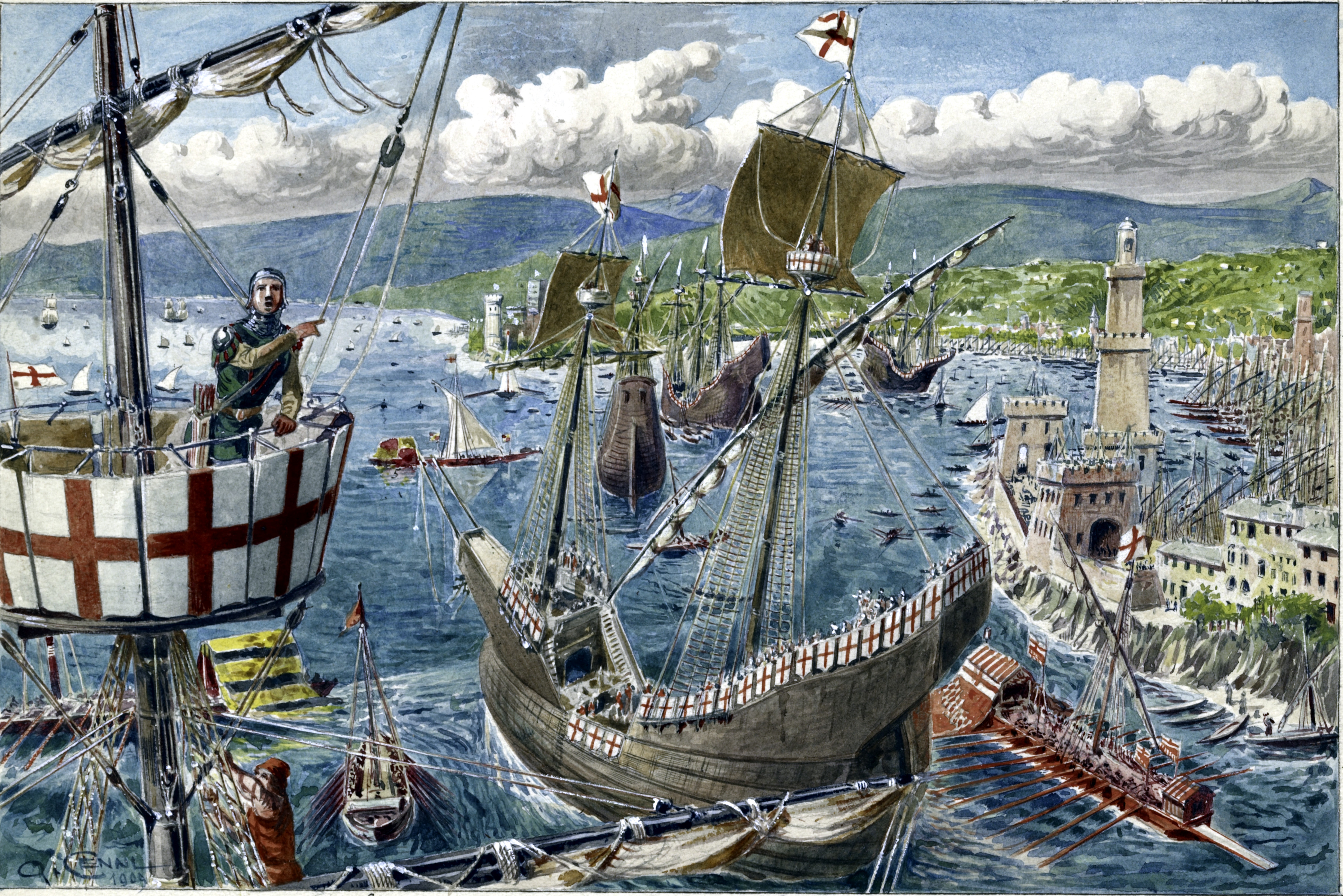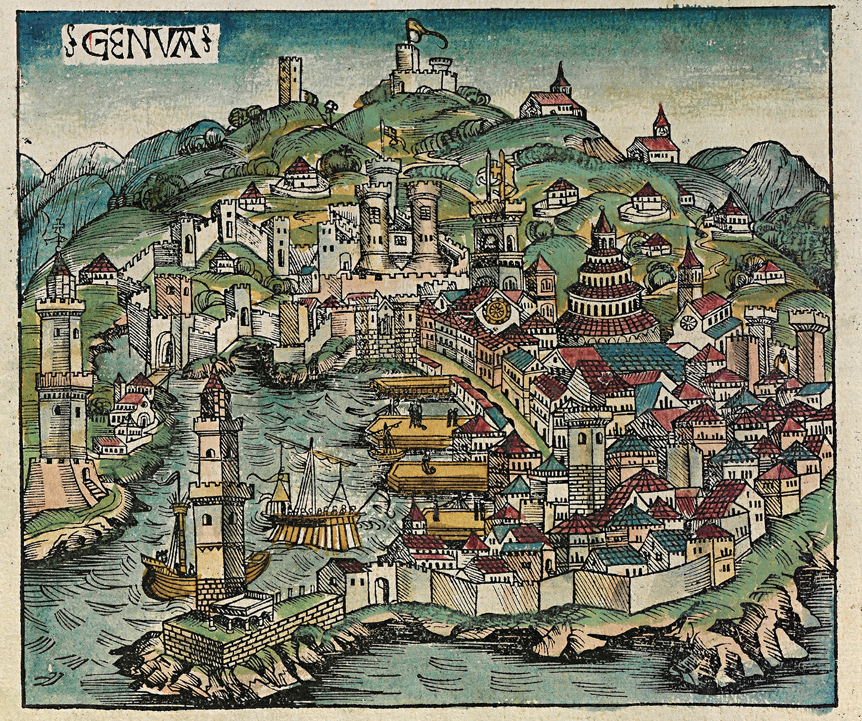|
Genoa Urban Railway Service
The Genoa urban railway service is operated by Trenitalia on the lines around the city of Genoa. History The urban railway service in Genoa was opened in 1964 by the Ferrovie dello Stato. It was the second urban railway service after the "metropolitana FS" in Naples.Giovanni Cornolò: ''Automotrici elettriche dalle origini al 1983.'' Duegi Editrice, 2011, p. 243. The FS used the modern EMUs ALe 803, projected for commuter rail services. In 1976 they were substituted by their newer evolution, the ALe 801/940. The service suffered because of the overcrowded section between Sampierdarena and Brignole, so from 1987 the line was doubled building another two tracks, by reusing some old harbor branches. The new bypass was opened on 23 May 1993 and included a new underground station at Piazza Principe. During the years some new stops have been added: in 1994 Costa di Sestri Ponente, and in 2005 San Biagio and Via di Francia; in 2006 the old Pra station has been substituted by a ... [...More Info...] [...Related Items...] OR: [Wikipedia] [Google] [Baidu] |
Genoa
Genoa ( ; it, Genova ; lij, Zêna ). is the capital of the Regions of Italy, Italian region of Liguria and the List of cities in Italy, sixth-largest city in Italy. In 2015, 594,733 people lived within the city's administrative limits. As of the 2011 Italian census, the Province of Genoa, which in 2015 became the Metropolitan City of Genoa, had 855,834 resident persons. Over 1.5 million people live in the wider metropolitan area stretching along the Italian Riviera. On the Gulf of Genoa in the Ligurian Sea, Genoa has historically been one of the most important ports on the Mediterranean Sea, Mediterranean: it is currently the busiest in Italy and in the Mediterranean Sea and twelfth-busiest in the European Union. Genoa was the capital of Republic of Genoa, one of the most powerful maritime republics for over seven centuries, from the 11th century to 1797. Particularly from the 12th century to the 15th century, the city played a leading role in the commercial trade in Euro ... [...More Info...] [...Related Items...] OR: [Wikipedia] [Google] [Baidu] |
Genova Sampierdarena Railway Station
Genova Sampierdarena railway station ( it, Stazione di Genova Sampierdarena) is located in Piazza Montano, in the Sampierdarena district of Genoa, Italy. It is Genoa's third most important railway station, after Genova Piazza Principe and Genova Brignole. The station is owned by Rete Ferroviaria Italiana (RFI), a subsidiary of the Ferrovie dello Stato (FS) group. The commercial area of the station building is managed by Centostazioni. RFI internally classifies the facility in its ''gold'' category. About 7,000,000 passengers use the station each year. History The original nucleus of the station was built in 1853 at the completion of Genoa-Busalla section of the Turin–Genoa railway. The station was then enlarged with the construction of the Genoa–Ventimiglia railway and the Asti–Genoa railway, for which it is also a junction station. Features Genova Sampierdarena has six tracks for passenger traffic. The first four, located on the north side of the station, are for ... [...More Info...] [...Related Items...] OR: [Wikipedia] [Google] [Baidu] |
Transport In Genoa
Transport (in British English), or transportation (in American English), is the intentional movement of humans, animals, and goods from one location to another. Modes of transport include air, land (rail and road), water, cable, pipeline, and space. The field can be divided into infrastructure, vehicles, and operations. Transport enables human trade, which is essential for the development of civilizations. Transport infrastructure consists of both fixed installations, including roads, railways, airways, waterways, canals, and pipelines, and terminals such as airports, railway stations, bus stations, warehouses, trucking terminals, refueling depots (including fueling docks and fuel stations), and seaports. Terminals may be used both for interchange of passengers and cargo and for maintenance. Means of transport are any of the different kinds of transport facilities used to carry people or cargo. They may include vehicles, riding animals, and pack animals. Vehicles may incl ... [...More Info...] [...Related Items...] OR: [Wikipedia] [Google] [Baidu] |
Genoa Metro
__NOTOC__ The Genoa Metro ( it, Metropolitana di Genova) is a rapid transit consisting of a single line that connects the centre of Genoa, Italy with the suburb of Rivarolo Ligure, to the north-west of the city centre. The service is currently managed by Azienda Mobilità e Trasporti (AMT), which provides public transport for the city of Genoa. It is a long (standard gauge) double-track line and is electrified at 750 volts DC. It has a direct connection with the underground suburban station under Trenitalia's mainline railway station, ''Principe''. History The origins of a subway in Genoa date back to the beginning of the twentieth century; in 1907 Carlo Pfalz, who had already designed the Zecca-Righi funicular, was the first to explore the construction of an underground railway with electric traction. Several projects, including that of the engineer Angelo Massardo and those of Renzo Picasso (1911 and 1930), were proposed without being realized. Instead, a tram system was ... [...More Info...] [...Related Items...] OR: [Wikipedia] [Google] [Baidu] |
Genova Pra Railway Station
Genoa ( ; it, Genova ; lij, Zêna ). is the capital of the Italian region of Liguria and the sixth-largest city in Italy. In 2015, 594,733 people lived within the city's administrative limits. As of the 2011 Italian census, the Province of Genoa, which in 2015 became the Metropolitan City of Genoa, had 855,834 resident persons. Over 1.5 million people live in the wider metropolitan area stretching along the Italian Riviera. On the Gulf of Genoa in the Ligurian Sea, Genoa has historically been one of the most important ports on the Mediterranean: it is currently the busiest in Italy and in the Mediterranean Sea and twelfth-busiest in the European Union. Genoa was the capital of one of the most powerful maritime republics for over seven centuries, from the 11th century to 1797. Particularly from the 12th century to the 15th century, the city played a leading role in the commercial trade in Europe, becoming one of the largest naval powers of the continent and considered am ... [...More Info...] [...Related Items...] OR: [Wikipedia] [Google] [Baidu] |
Genova Piazza Principe Railway Station
Genova Piazza Principe railway station (commonly called ''Genova Principe'' or incorrectly ''Genova Porta Principe'') is the central station of Genoa and is located on Piazza Acquaverde, occupying the entire north side of Via Andrea Doria—where the station entrance is located—in the town centre and a short distance from the Palazzo del Principe, from which it takes its name. It is used by about 66,000 passengers per day and 24,000,000 per year. The first temporary station was opened in 1854 at the end of the line from Turin. Lines were later opened to Milan, Rome and the French border at Ventimiglia. History The station derives its name from the adjacent Piazza del Principe (In Italian literally "plaza of the prince"), located next to the Palazzo del Principe (literally "palace of the prince") adjacent to the street called Via Andrea Doria in the Fassolo neighbourhood. The small goods yard, which was the core of the original station, occupies the area between Piazza del Prin ... [...More Info...] [...Related Items...] OR: [Wikipedia] [Google] [Baidu] |
Genova Brignole Railway Station
} Genova Brignole railway station is the second largest station of Genoa, northern Italy; it is located on ''Piazza Verdi'' in the town center at the foot of the Montesano hill (the main long distance station is Genova Piazza Principe station). Brignole is used by about 60,000 passengers a day and 22,000,000 per year. History The first station was built in 1868, but the current building was opened in 1905 for the Genoa international exposition. A project proposal was presented in 1902 by the engineer Giovanni Ottino that provided for a building for a 105 metre long, divided into three buildings on a central axis of symmetry. The building incorporates romantic "renaissance" themes of the French school of architecture, enriched by extensive decorations. The pilaster jambs and frames of the first floor are mostly white. The Roman-style facade, overlooking Piazza Verdi, is decorated with stucco and stone from the quarries of Montorfano. The walls of the rooms inside are decorated wit ... [...More Info...] [...Related Items...] OR: [Wikipedia] [Google] [Baidu] |
FS Class ALe 801/940
The ALe 801/940 are a series of EMUs built in the 1970s for the Italian state railway FS, now used by its successor, Trenitalia. Description The ALe 801/940 are usually run in 4 car trains, with a power car at each end (ALe 801 and ALe 940) and two trailers (Le 108) in the middle. History In the early 1970s, Ferrovie dello Stato decided to improve the rolling stock for its commuter rail services. As chopper technology was at that time only at a prototype-state (with the so-called ″ Treni GAI″), FS decided to order EMUs with traditional electric equipment. The ALe 801/940 were ordered in 1973, as an evolution of the older ALe 803, with better capacity and acceleration. These trains were delivered between 1975 and 1979 and put into service around the larger cities of Italy. Originally painted in a showy orange and yellow livery, that gave them the nickname of "Arancia Meccanica" (Italian title of the movie ''A Clockwork Orange ''A Clockwork Orange'' may refer to: * ' ... [...More Info...] [...Related Items...] OR: [Wikipedia] [Google] [Baidu] |
Commuter Rail
Commuter rail, or suburban rail, is a passenger rail transport service that primarily operates within a metropolitan area, connecting commuters to a central city from adjacent suburbs or commuter towns. Generally commuter rail systems are considered heavy rail, using electrified or diesel trains. Distance charges or zone pricing may be used. The term can refer to systems with a wide variety of different features and service frequencies, but is often used in contrast to rapid transit or light rail. Similar non-English terms include ''Treno suburbano'' in Italian, '' Cercanías'' in Spanish, Aldiriak in Basque, Rodalia in Catalan/Valencian, Proximidades in Galician, '' Proastiakos'' in Greek, ''Train de banlieue'' in French, '' Banliyö treni '' in Turkish, ''Příměstský vlak'' or ''Esko'' in Czech, '' Elektrichka'' in Russian, ''Pociąg podmiejski '' in Polish and ''Pendeltåg'' in Swedish. Some services share similarities with both commuter rail and high-frequency ... [...More Info...] [...Related Items...] OR: [Wikipedia] [Google] [Baidu] |




